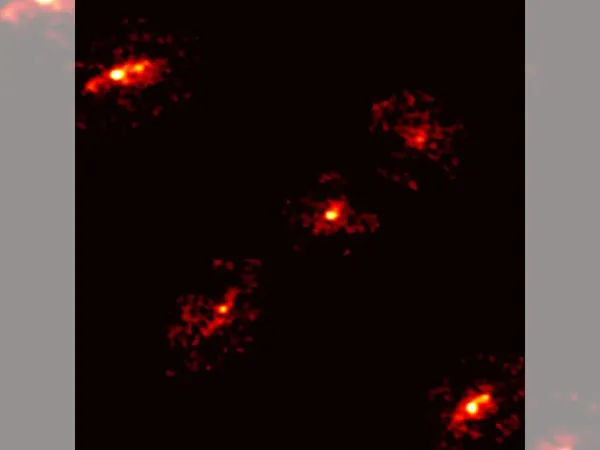
Unveiling Cosmic Mysteries: The Astonishing Discovery of the Fifth Image in the Einstein Cross
2025-09-20
Author: Jia
Scientists Stumble Upon a Cosmic Rarity
A groundbreaking discovery has left astronomers buzzing as researchers from Rutgers University and a French scientist uncover a striking anomaly in the renowned Einstein Cross—a cosmic formation where light from a distant galaxy is bent by the gravitational pull of closer galaxies. But this time, it’s not just the standard four images; an unexpected fifth image has taken center stage!
What’s an Einstein Cross and Why Does It Matter?
The phenomenon known as an Einstein Cross occurs when the gravity from nearby galaxies acts like a cosmic lens, distorting light from a distant galaxy and presenting it in four separate images, all positioned at 90-degree angles from each other. However, this recently discovered Einstein Cross has one unusual twist—a mysterious fifth image at its center!
An Unexpected Twist: The Role of Dark Matter
Discovered by the keen eye of French astronomer Pierre Cox, this unexpected fifth image prompted immediate intrigue among scientists. The research team, which includes theoretical astrophysicist Charles Keeton and his colleague Andrew Baker, quickly realized that something extraordinary was at play. According to Keeton, "You can't get a fifth image in the center unless something unusual is going on with the mass that's bending the light." Their suspicions were soon confirmed: the central image was linked to a hidden halo of dark matter.
A Journey of Discovery and Collaboration
Cox first noticed the anomaly while examining a distant, dusty galaxy dubbed HerS-3 using sophisticated radio telescopes, including the Northern Extended Millimeter Array (NOEMA) in the French Alps. Despite his efforts to dismiss the fifth image as an error, it remained persistent, leading him to share his findings with Keeton and Baker.
Modeling the Unseen: Dark Matter Revealed
Determined to understand this rare cosmic event, the team at Rutgers constructed a detailed computer model of the gravitational lens. The visible galaxies causing the light bending couldn't fully account for the complex five-image pattern they observed. "We tried every reasonable configuration using just the visible galaxies, and none of them worked," Keeton recounted.
However, introducing a dark matter halo changed the game, allowing the mathematics to fall into place. "That's the power of modeling. It helps reveal what you can't see," added Keeton.
A Gateway to Understanding Dark Matter
This extraordinary discovery not only illuminates the peculiarities of gravitational lensing but also presents a rare opportunity to delve deeper into the enigmatic substance known as dark matter that envelops galaxies. The findings of this cosmic encounter will soon be detailed in an upcoming issue of The Astrophysical Journal, paving the way for further exploration of the mysteries that lie beyond our galaxy.

 Brasil (PT)
Brasil (PT)
 Canada (EN)
Canada (EN)
 Chile (ES)
Chile (ES)
 Česko (CS)
Česko (CS)
 대한민국 (KO)
대한민국 (KO)
 España (ES)
España (ES)
 France (FR)
France (FR)
 Hong Kong (EN)
Hong Kong (EN)
 Italia (IT)
Italia (IT)
 日本 (JA)
日本 (JA)
 Magyarország (HU)
Magyarország (HU)
 Norge (NO)
Norge (NO)
 Polska (PL)
Polska (PL)
 Schweiz (DE)
Schweiz (DE)
 Singapore (EN)
Singapore (EN)
 Sverige (SV)
Sverige (SV)
 Suomi (FI)
Suomi (FI)
 Türkiye (TR)
Türkiye (TR)
 الإمارات العربية المتحدة (AR)
الإمارات العربية المتحدة (AR)